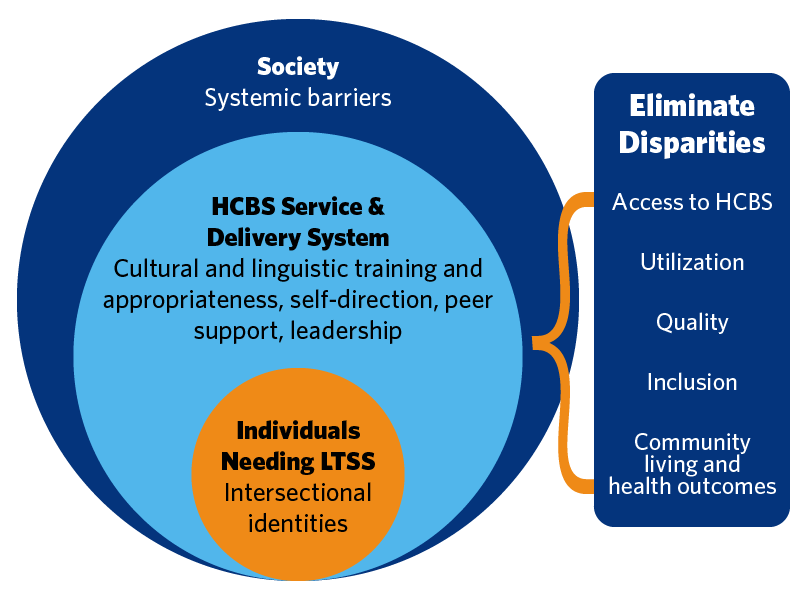Community Living Equity Center

The Community Living Equity Center (CLEC) examines barriers in access to community living services and support for underserved people with disabilities.
The term “community living” refers to services and supports that allow individuals with disabilities to remain in their homes and communities rather than in nursing homes or other institutional settings.
We know little about disparities in community living faced by individuals from racial, ethnic, and other underserved communities. This lack of data hinders the development of policies and effective interventions to enhance access and improve the quality of services and supports.
Led by an active and effective Community Advisory Committee made up of people with disabilities from diverse communities, the CLEC is focused on the following goals:
- Generate detailed new knowledge about disparities in community living.
- Develop or identify effective systems-change initiatives or other promising practices that reduce community-living disparities.
- Serve as a national resource for community living and participatory research that recognizes the unique challenges faced by people with disabilities from traditionally underserved communities.
By addressing the current knowledge gaps, the CLEC will develop new policies and systems-change initiatives to enhance access and quality of community living services and supports. These will be actively disseminated to community stakeholders.
Below is a conceptual framework for how community-living equity can be achieved. Both the society level and the level of the HCBS service and delivery system influence the existence of disparities. Community-living equity would mean the elimination of these disparities.

FIGURE. Macro-, meso-, and micro-level conceptual framework of how community-living equity would work to eliminate disparities. At the macro (most general) level, Society includes systemic barriers in policies and practices. At the meso (or intermediary) level, the HCBS Service and Delivery System includes cultural and linguistic training and appropriateness, self-direction, peer support, and leadership. At the micro (or individual and family) level, Individuals Needing LTSS includes underserved communities. Both society and the HCBS service and delivery system affect the existence of disparities experienced by individuals, such as in access to HCBS, utilization, quality, inclusion, and community-living and health outcomes.
The overarching goal of the CLEC is to address gaps in our knowledge about disparities in access to services and supports and improve outcomes faced by disabled people of color and develop interventions to address equity, by leveraging existing and new data sources, developing new policy and systems change initiatives, and through active dissemination of findings and trainings for stakeholders.



